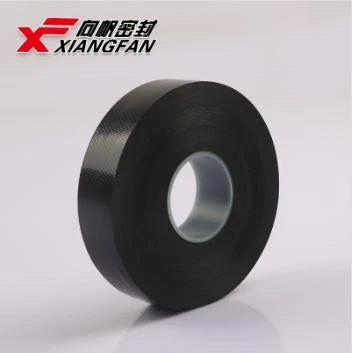The Importance and Functionality of Insulating Strips
When we think about insulation, our minds often jump to thick layers of foam or fiberglass installed in our homes to keep warmth in and cold out. However, a less visible yet equally essential component of insulation technology is the insulating strip. Insulating strips are crucial in various applications, ranging from electrical devices to building materials, serving to enhance efficiency, safety, and performance.
At its core, an insulating strip is a material that is designed to prevent the passage of electricity, heat, or sound between two surfaces. These strips can be made from various materials, including rubber, plastic, and other polymers, each selected based on specific requirements such as temperature resistance, flexibility, and ease of installation. Their versatility means they can be used in many contexts, making them indispensable in modern technology and construction.
One of the most common applications of insulating strips is in the field of electrical engineering. In electrical appliances, insulating strips prevent unintended signals or current from interfering with the device's performance. For instance, in power tools, these strips are often used to separate conductive elements from non-conductive parts, thus preventing short circuits and ensuring user safety. This is particularly crucial in environments where equipment is exposed to moisture or other environmental stresses.
In the construction industry, insulating strips play a vital role in energy efficiency. Windows and doors, for example, often incorporate insulating strips to seal gaps that would otherwise allow air to leak in or out. This results in significant energy savings, as it reduces the need for heating or cooling systems to work harder to maintain a comfortable indoor temperature. With rising energy costs and growing concerns about climate change, reinforcing buildings' energy efficiency through effective insulation methods has become a priority.
insulating strip

Insulating strips are also vital in the automotive industry. Modern vehicles are designed with an emphasis on fuel efficiency and passenger comfort. Insulating strips help with noise reduction, as they minimize sound transmission from the engine and outside environment into the cabin. This contributes to a quieter ride, enhancing the overall driving experience. Additionally, these strips also serve as a thermal barrier, protecting sensitive electronic components under the hood from excessive heat.
Beyond their functional applications, insulating strips can also contribute to aesthetic design. In modern architecture, for instance, the careful integration of insulating strips in window frames and wall assemblies can create sleek, minimalist appearances while providing all the necessary thermal performance. This dual functionality as both insulation and design element makes insulating strips an essential component in contemporary design practices.
The manufacturing of insulating strips has also evolved with advancements in technology. Modern production techniques allow for the customization of insulating strips to meet specific application needs. Whether it’s adjusting the thickness, length, or material composition, manufacturers can create insulating strips that cater to particular demands. This customization ensures that they provide the best performance possible, enhancing their viability in various situations.
In summary, while often overlooked, insulating strips are a fundamental component in several industries, ranging from electrical engineering to construction and automotive design. Their multifunctionality ensures that they contribute significantly to safety, energy efficiency, and comfort. As technology continues to advance and the need for energy-efficient solutions grows, the importance of insulating strips will only increase. Investing in high-quality insulating strips can lead to better-performing products, reduced operational costs, and a positive impact on the environment. In a world striving for sustainability and efficiency, insulating strips emerge not merely as passive components but as essential players in the quest for improved energy management and safety standards.
-
XIANGFAN Rubber Tape-Ultimate Solutions for All Your Insulation NeedsNewsJun.24,2025
-
XIANGFAN Rubber Tape-Protection for Industrial and Residential ApplicationsNewsJun.24,2025
-
XIANGFAN Rubber Tape: Superior Safety and Sealing for Demanding EnvironmentsNewsJun.24,2025
-
XIANGFAN Rubber Tape: Reliable Solutions for Every Electrical ChallengeNewsJun.24,2025
-
XIANGFAN Electrical & Industrial Tape: Powering Reliability Across IndustriesNewsJun.24,2025
-
XIANGFAN Electrical & Industrial Tape: Excellence in Every ApplicationNewsJun.24,2025
